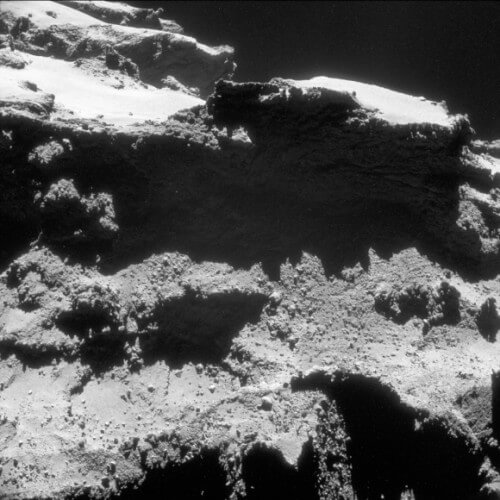The most recent image revealed by the European Space Agency of comet 67P-Churyumov-Grasimenko was actually taken many months ago, on October 27, 2014, even before the Philae lander separated from Rosetta and which, according to the scientists, the valley was created as a result of the escape of material from the comet in this area

The latest image revealed by the European Space Agency from comet 67P-Churyumov-Grasimenko was actually taken many months ago, on October 27, 2014, even before the Philae lander separated from Rosetta.
In the image above, taken by the OSIRIS (Optical, Spectroscopic and Infrared Remote Imaging System) camera, we see the very shadowy cliff that separates two areas in the nucleus of comet 67P.
The scarred area of Aten lies just below the steep cliffs that separate it from its home. In contrast to Babi and the neighboring area ASH, small parts of which can be seen in the lower part of the picture and towards the upper right part - you are not covered with smooth material but appear to be full of rocks.
Both are located in the larger sphere of the cometary nucleus, while parts of the Meth region on the smaller sphere are visible in the distance in the upper left corner of the image.
The scale of the image is 75 centimeters per pixel and therefore it covers an area 770 meters wide. According to the calculations, the height of the cliffs easily exceeds 190 centimeters.
The researchers estimate that the morphological differences between the Babi and Aten regions, both in texture and height, are the result of a large-scale loss of material from them in several events in the comet's history.
נNicholas Thomas and his colleagues They wrote in an article that appeared in the journal Science that Athen's valley may be the result of one or more major mass loss events in the comet's history. In an article published inRosetta's blog, the volume of the material that escaped from Athena is equivalent to fifty times the pyramid of Giza, an appropriate comparison because all the figures on the nucleus of the comet are taken from the culture of ancient Egypt.
